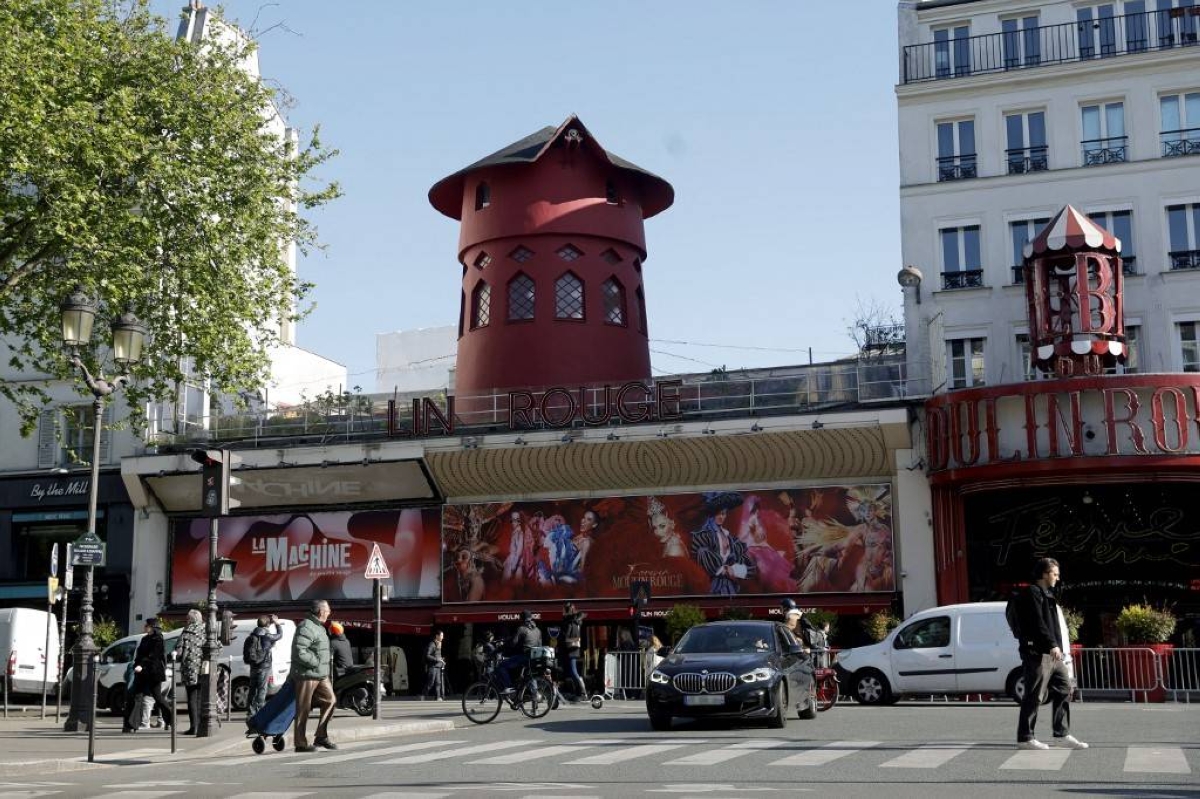
PARIS: The blades of the windmill on top of the Moulin Rouge cabaret, one of Paris' most famous landmarks, collapsed during the night, firefighters said on Thursday, just months before the French capital hosts the Olympics.
While the reason for the accident was not yet known, the Moulin Rouge's director Jean-Victor Clerico said there was no sign of "foul play," adding that the cause was "obviously a technical problem."
No one was hurt, and there was no risk of further collapse, Paris firefighters said.
The accident will add to concerns of whether Paris, one of the most visited cities in the world, is ready to host the throngs of people who will descend on the City of Lights in July and August for the Olympic Games.
Hundreds of thousands of people watch the cabaret's daily shows each year, with many more stopping to look from the outside at the landmark at the foot of the Montmartre hill.
"Fortunately, this happened after closing" at 1:15 a.m., a Moulin Rouge official earlier told Agence France-Presse (AFP) on condition of anonymity.
"Every week, the cabaret's technical teams check the windmill mechanism and did not note any problems," the official said, adding that there was no more information on the reason for the collapse.
"It's the first time that an accident like this has happened" since the cabaret first opened its doors on Oct. 6, 1889, the official said.
Paris police chief Laurent Nunez told broadcaster TF1 that "safety architects" had been sent to the scene.
An AFP journalist saw workers loading the slightly twisted blades of the windmill into the bed of a truck for removal.
The letters M, O and U had also been toppled from the name spelled out on the building's facade.
"It's as if the top had been chopped off the Eiffel Tower. It hurts me," said Daniel, a 58-year-old who said he passes the Moulin Rouge every day on his way to work. "I hope they repair it soon."
The Moulin Rouge, with its distinctive red windmill blades, is located in northern Paris and is one of the most visited landmarks in the city.
About 600,000 people each year watch its two daily shows held year-round, keeping 450 staff in work.
Known as the birthplace of the modern dance form called the can-can, it opened its doors in October 1889.
It quickly became a hit, and a stop to look at its facade or catch a show inside is a must on most tourists' checklist for the French capital, especially since the eponymous 2001 film by Baz Luhrmann.
The only serious accident the landmark has endured was a fire that erupted during works in 1915, which forced the venue to close for nine years.
Read The Rest at :





